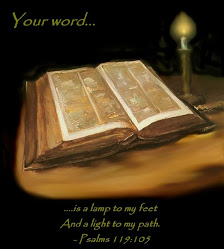
Moriel Ministries Be Alert! has added this Blog as a resource for further information, links and research to help keep you above the global deception blinding the world and most of the church in these last days. Jesus our Messiah is indeed coming soon and this should only be cause for joy unless you have not surrendered to Him. Today is the day for salvation! For He is our God, and we are the people of His pasture and the sheep of His hand. Today, if you would hear His voice, - Psalms 95:7
Thursday, January 04, 2007
Ghosts in the Machine
Alert Focus: As in the days of Noah
Deuteronomy 18:10-12
"There shall not be found among you anyone who makes his son or his daughter pass through the fire, one who uses divination, one who practices witchcraft, or one who interprets omens, or a sorcerer, or one who casts a spell, or a medium, or a spiritist, or one who calls up the dead. "For whoever does these things is detestable to the LORD; and because of these detestable things the LORD your God will drive them out before you.
Note:
The posting of the following opinion piece is not an endorsement of the authors views but rather a "heads up" as to the direction science is currently taking the human race.
BE/\LERT!
NEW YORK TIMES - By Op-Ed Contributor Deborah Blum - December 30, 2006 -- THE human brain is, in surprising part, an appliance powered by electricity. It constantly generates about 12 watts of energy, enough to keep a flashlight glowing. It works by sending out electrical impulses — bursts of power running along the cellular wires of the nervous system — to stimulate muscles into motion or thought into being. We’re mostly aware of this when the machine falters, when it short-circuits into epilepsy or frays into the tremors of Parkinson’s disease.
So when scientists wrote in a recent issue of the journal Nature that they could induce phantom effects — the sensation of being haunted by a shadowy figure — by stimulating the brain with electricity, it made perfect neurological sense. One could even argue that the existence of such sensations explains away the so-called supernatural. In fact, as The Times reported, the researchers promptly concluded that ghosts are mere “bodily delusions,” electrical misfirings and nothing more.
The report does look like a kind of proof — albeit very small proof, as this was a study of two people — if one happens already to believe that ghosts are no more than biological quirks. But what’s fascinating is that it can also look like proof that ghosts are real entities, to those inclined to believe as much. And so the findings also present a case study in two very different perspectives.
The scientific study of the supernatural began in the late 19th century, in synchrony with the age of energy. It’s hardly coincidental that as traditional science began to reveal the hidden potential of nature’s powers — magnetic fields, radiation, radio waves, electrical currents — paranormal researchers began to suggest that the occult operated in similar ways.
A fair number of these occult explorers were scientists who studied nature’s highly charged circuits. Marie Curie, who did some of the first research into radioactive elements like uranium, attended séances to assess the powers of mediums. So did the British physicist J. J. Thomson, who demonstrated the existence of the electron in 1897. And so did Thomson’s colleague, John Strutt, Lord Rayleigh, who won the 1904 Nobel Prize in Physics for his work with atmospheric gases.
Rayleigh would later become president of the British Society for Psychical Research. And he would be joined in that organization by other physicists, including the wireless radio pioneer Sir Oliver Lodge, who proposed that both telepathy and ghostly appearances were achieved through energy transmissions connecting living minds to one another and perhaps even to the dead.
Lodge argued that the human brain could function as a kind of receiver, picking up signals at a subconscious level. These were powered by some undiscovered energy, traveling perhaps in waves, perhaps in currents. Such transmissions lay behind telepathic experiences, including shared thoughts. Along the same lines, he thought it possible that a spirit’s appearance was really just its specific energy signal stimulating a response from the receiver’s brain.
The theories developed by Lodge and his colleagues dovetail rather neatly with the electricity-produced hauntings that Olaf Blanke, a Swiss neuroscientist, reports in Nature. For example, he used an implanted electrode to send a current into a region of the brain called the angular gyrus. The test was focused on language processing. But as a side effect, one of the test subjects nervously reported sensing another person in bed with her, silent and shadowy. Her creepy companion came and went with the ebb and flow of current.
It would be compelling — and more convincing — if the same result could be exhibited in a few more subjects. But Dr. Blanke believes that even this one subject’s experience serves as an example of how we may mistake errant signals in the brain for something more. Humans tend, he points out, to seek explanation, to impose meaning on events that may have none. The pure rationalists among us suggest that our need to add meaning to a basic, biological existence easily accounts for the way we organize religions and find evidence of otherworldly powers in the stuff of everyday life.
The nonpurists suggest a different conclusion: willful scientific blindness. And there’s no reason Dr. Blanke’s study can’t support their theories of the paranormal. Perhaps his experimental electric current simply mimics the work of an equally powerful spirit. Much of the psychical research done today applies similar principles: brain-imaging machines highlight parts of the brain that respond to psychic phenomena, while other devices are used to search for infrared radiation or increased electrical activity in haunted houses.
The American psychologist and philosopher William James, also a leader in the Victorian paranormal research movement, remarked even then on the culture clash: “How often has ‘Science’ killed off all spook philosophy, and laid ghosts and raps and ‘telepathy’ underground as so much popular delusion?” he wrote in 1909. And how often, James wondered rhetorically, had such efforts stopped people from seeing ghosts and believing in supernatural powers? Because in the end, of course, the conclusion has nothing to do with science at all and everything to do with how one sees the world.
I suspect that we’ll dwell forever in the haunted landscape of our beliefs. To many people it’s a world more interesting — bigger, stranger, more mysterious — than the one offered by science. Why choose instead to be creatures of chemical impulse and electrical twitch? We would rather gamble on even a tiny, electrical spark of a chance that we are something more.
Deborah Blum, a professor of journalism at the University of Wisconsin who won a Pulitzer Prize in 1992, is the author of “Ghost Hunters: William James and the Scientific Search for Life After Death.”
http://www.nytimes.com/2006/12/30/opinion/30blum.html
FAIR USE NOTICE: This blog contains copyrighted material the use of which has not always been specifically authorized by the copyright owner. We are making such material available in our efforts to advance understanding of religious, environmental, political, human rights, economic, democracy, scientific, and social justice issues, etc. We believe this constitutes a 'fair use' of any such copyrighted material as provided for in section 107 of the US Copyright Law. In accordance with Title 17 U.S.C. Section 107, the material on this site is distributed without profit to those who have expressed a prior interest in receiving the included information for research and educational purposes. For more information go to: http://www.law.cornell.edu/uscode/17/107.shtml. If you wish to use copyrighted material from this site for purposes of your own that go beyond 'fair use', you must obtain permission from the copyright owner.




